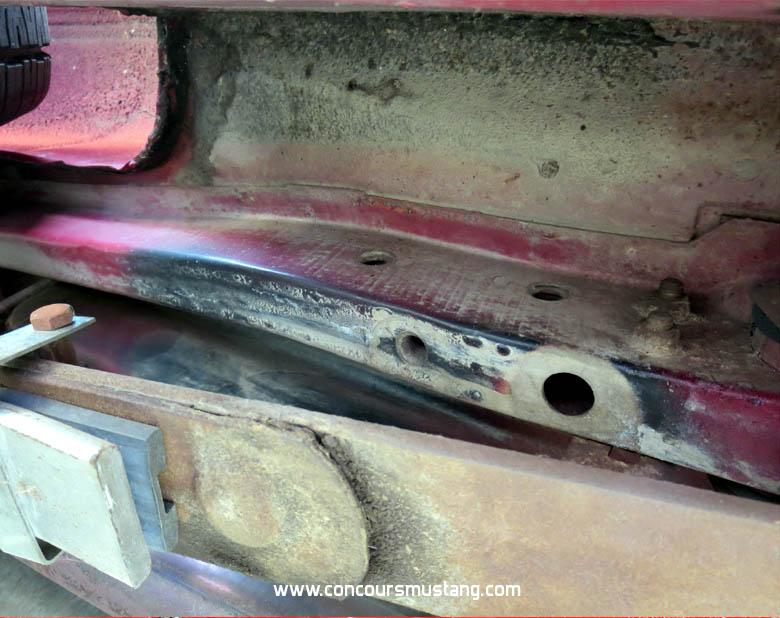Posted this response over on another site and thought I should cut and past it here to help current and future members looking for this information
+++++++++++++++++++++++++++++++++
The pinch weld black out was applied with a soft edge - not taped.
Truthfully the jury is still out (haven't found a manager or worker that can tell us how it was done) if the paint was applied from a pre-mounted jet, like the floor/undercarriage paint application from firewall rearward or by hand and if the edge was produced from just the spray edge or by a moving mask attached or located near the nozzle. In any case what is important to what we do is the results/look of the final product.
Remember the "blow outs" at the front edge of the rear wheel well as the rear edge of the rear wheel wells that produced direct application of paint on the floor, inner wheel well and frame visible behind these edges. This result tends (uniform & consistent findings) to lead me to think that it was applied from a mounted jet, triggered by a switch activated by contact with the moving track or unibody
Here are some pictures showing the edge, how wide it typically was applied and the overspray/results of its application
+++++++++++++++++++++++++++++++++
1a - Pinch weld blackout drivers side rear
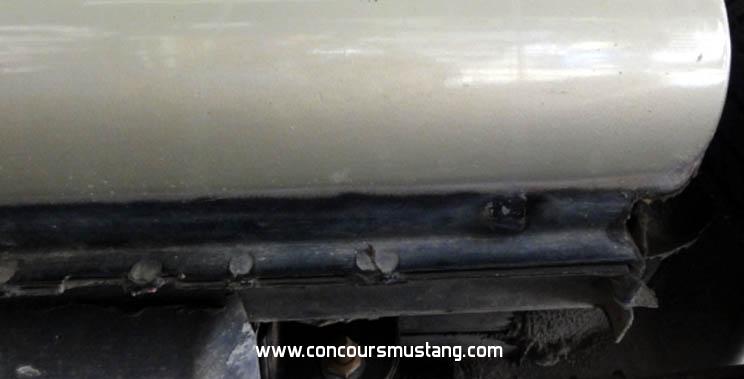
1b - Pinch weld blackout passenger side rear
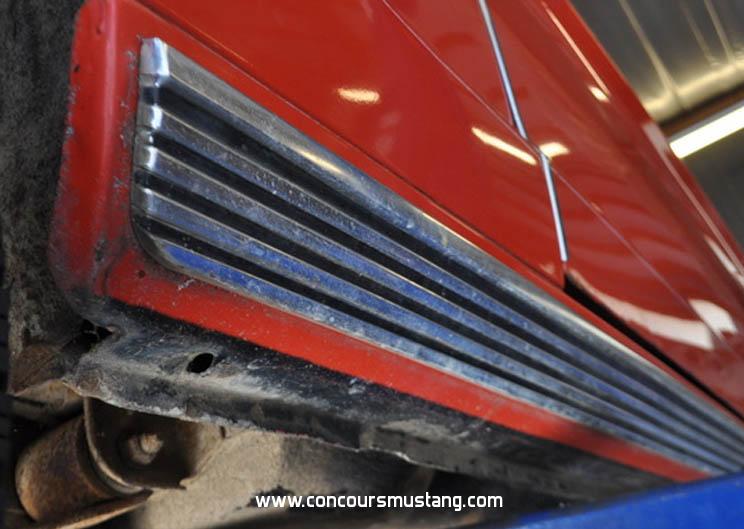
1c - Pinch weld green exterior
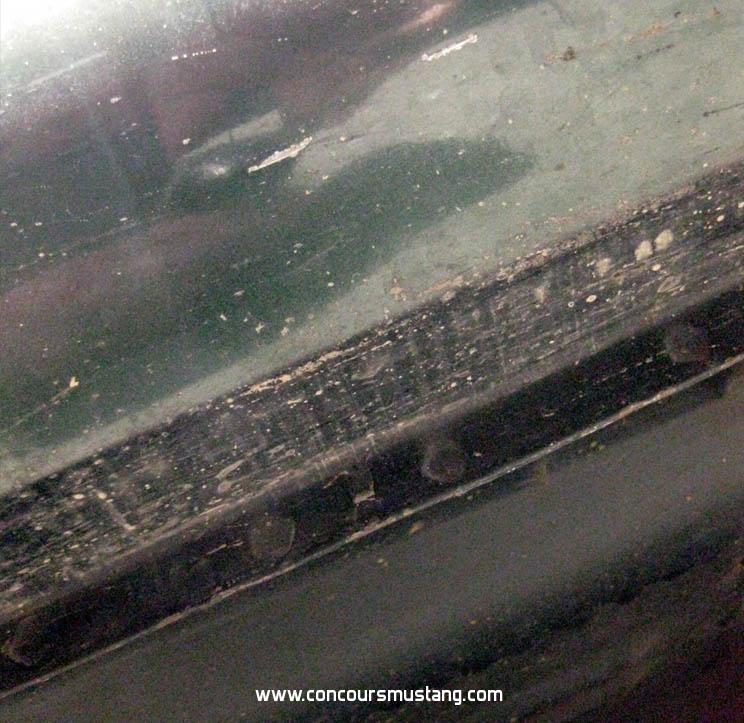
1d - Pinch weld blackout. Shows that the front fender was not installed at the time the black paint was applied
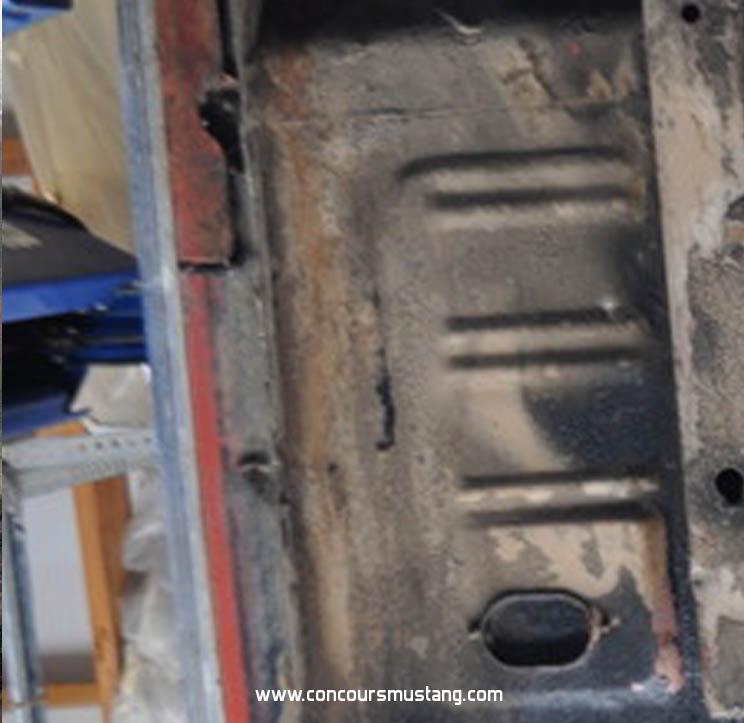
1e - Pinch weld blackout and resulting overspray on floor
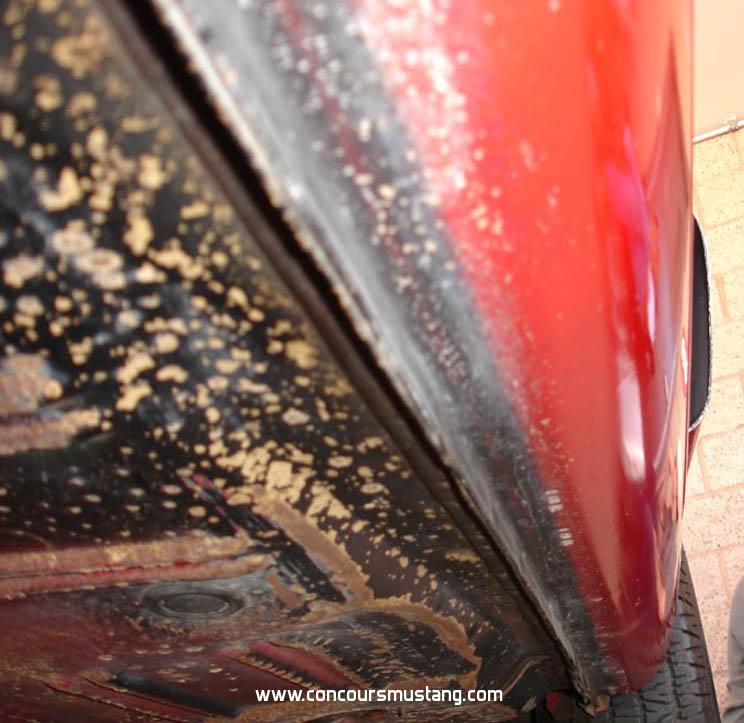
1f - Another example of the depth and coverage pinch weld overspray onto the floor and frame surfaces. Note that the exterior color is red so that overspray is difficult to make of against the red oxide floor color
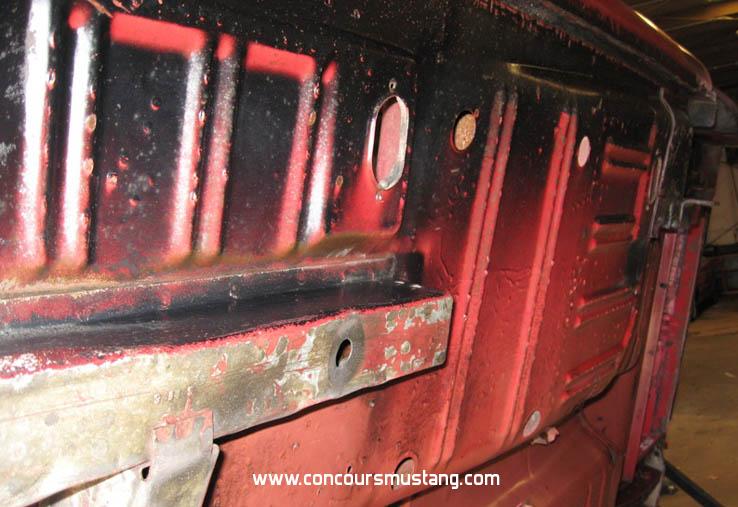
1g - Late 66 drivers side rear quarter panel - pinch weld black out. Got to love those helper springs
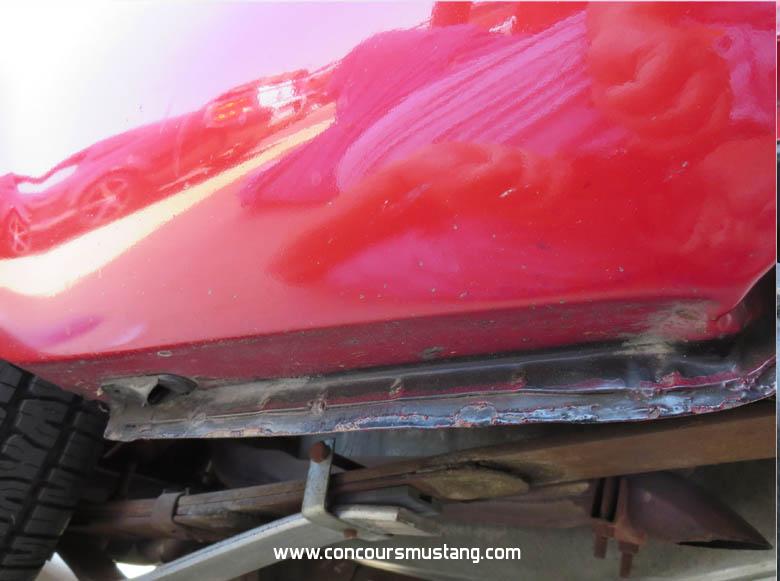
1h - Results of the over spray of that area. At the rear, drivers side, frame rail behind wheel well and quarter panel/trunk drop. Dolly mark is clearly visible as is the pinch weld black over overspray. Black on the frame rail and gas tank drop surfaces
Due to the angle of the applicator (more upward than inward) it's normal to find this heavy paint application in that area on car from San Jose this year
